For everyone from your favorite rock stars and actors – including John Mayer, Pearl Jam’s Mike McCready, and Jason Momoa – to budding guitar collectors with blank checks and an interest in sourcing only the best, Trevor Boone’s name is high on the shortlist of people that get the call when insiders are after the rarest vintage guitars and amps on the planet. Boone also happens to be a monster guitarist himself and his guitar matchmaking skills stem from an intrinsic understanding of the instrument. In fact, while still in his 30s, Boone has become one of the most trusted sources in the business when it comes to securing the holy grail of electric guitars, the Gibson Les Paul Standards produced between 1958 and 1960 known as “Bursts” for their iconic sunburst finishes. For the uninitiated, the Burst occupies the same space in the vintage guitar world as the “Newman” Daytona does in the vintage watch world, and they’re fretted over, dissected, and analyzed by their respective community with the same obsessive passion, hyper-focus, and polarization.
Trevor Boone’s approach to the vintage guitar world mirrors that of C + T’s approach to the vintage watch business in many, many ways. Both of our businesses have taken us around the world sourcing and delivering the remarkable watches and guitars we sell, and both of the objects we deal in have the uncanny tendency to become vehicles for stories, to carry past lives with them, and to bring people together. Ultimately, we’re both in the passion business, and a major part of that is sharing rare finds we unearth and their stories with everyone through media like the C + T Journal and our respective video outlets. Trevor and his team at ECG do an incredible job of bringing everyone along for the ride with their charming GuitaRV video series, which finds the ECG crew traveling the country quite literally in an RV as they seek out killer guitars and amps, deliver pieces to their new owners, and treat everyone to a peek behind the curtain of the vintage guitar business at both its zenith, but also its most human – oftentimes showing exactly where uncirculated instruments really come from and delving into the sentimental side of passing a cherished guitar along that’s been a part of someone’s family since it was originally purchased.
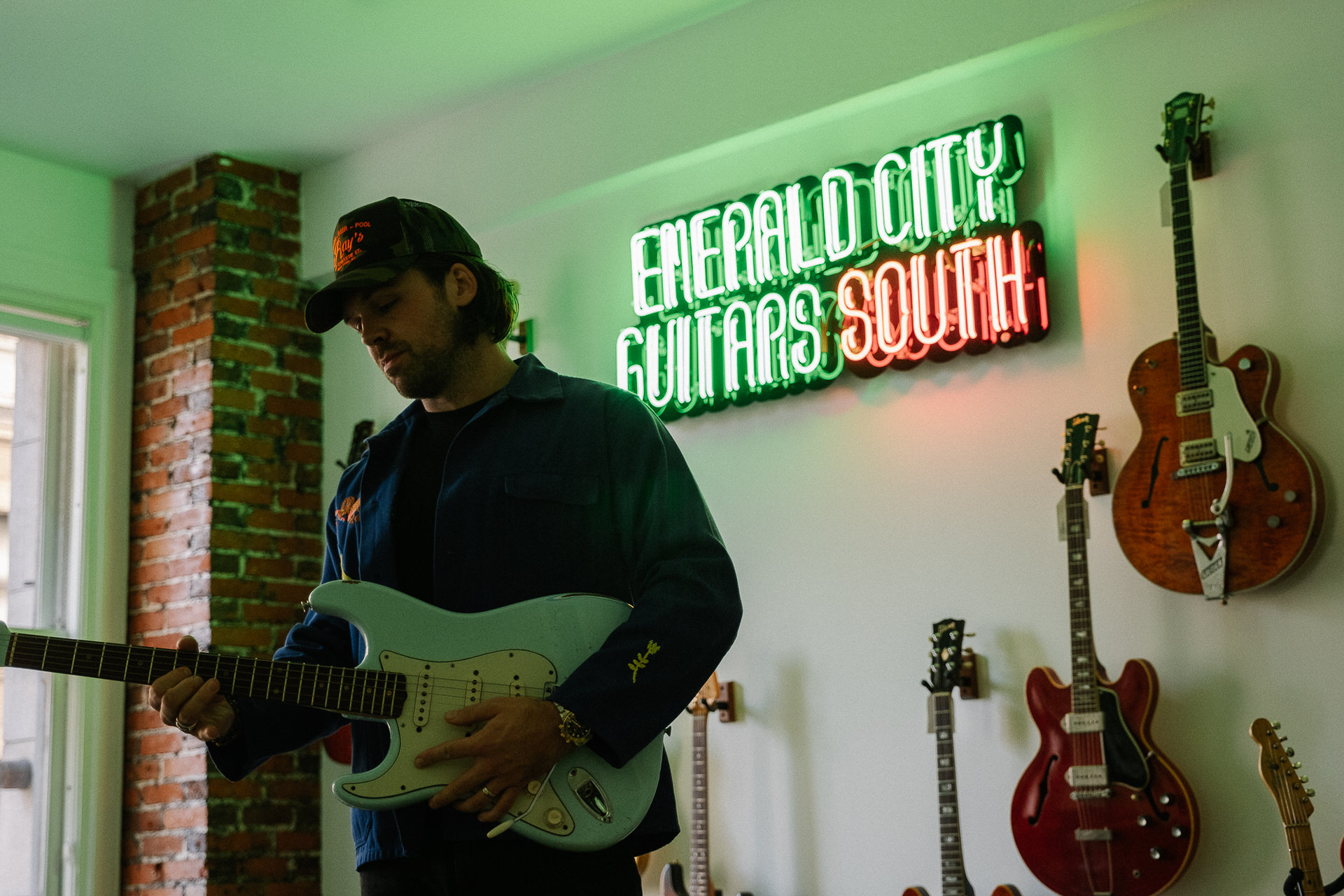
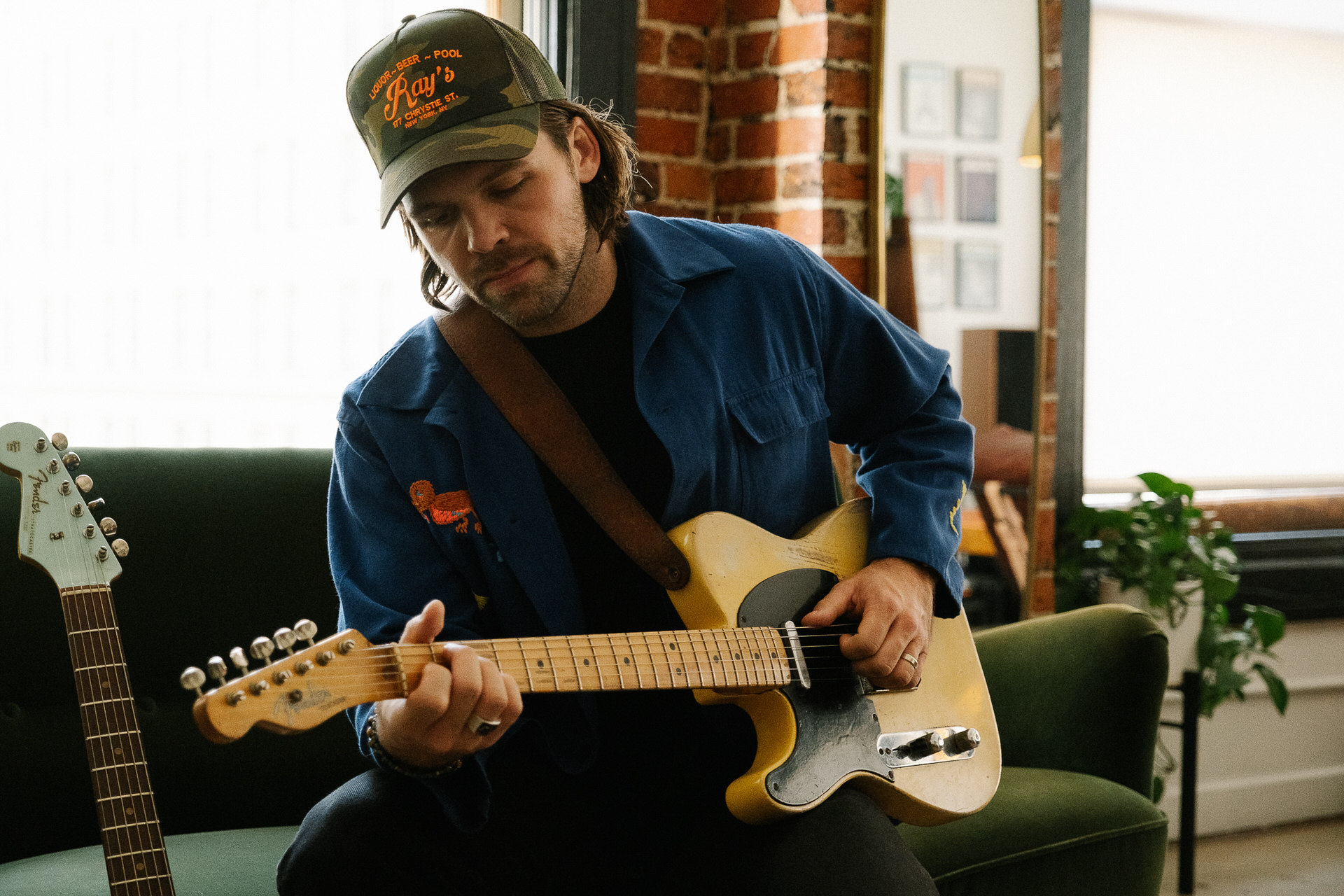
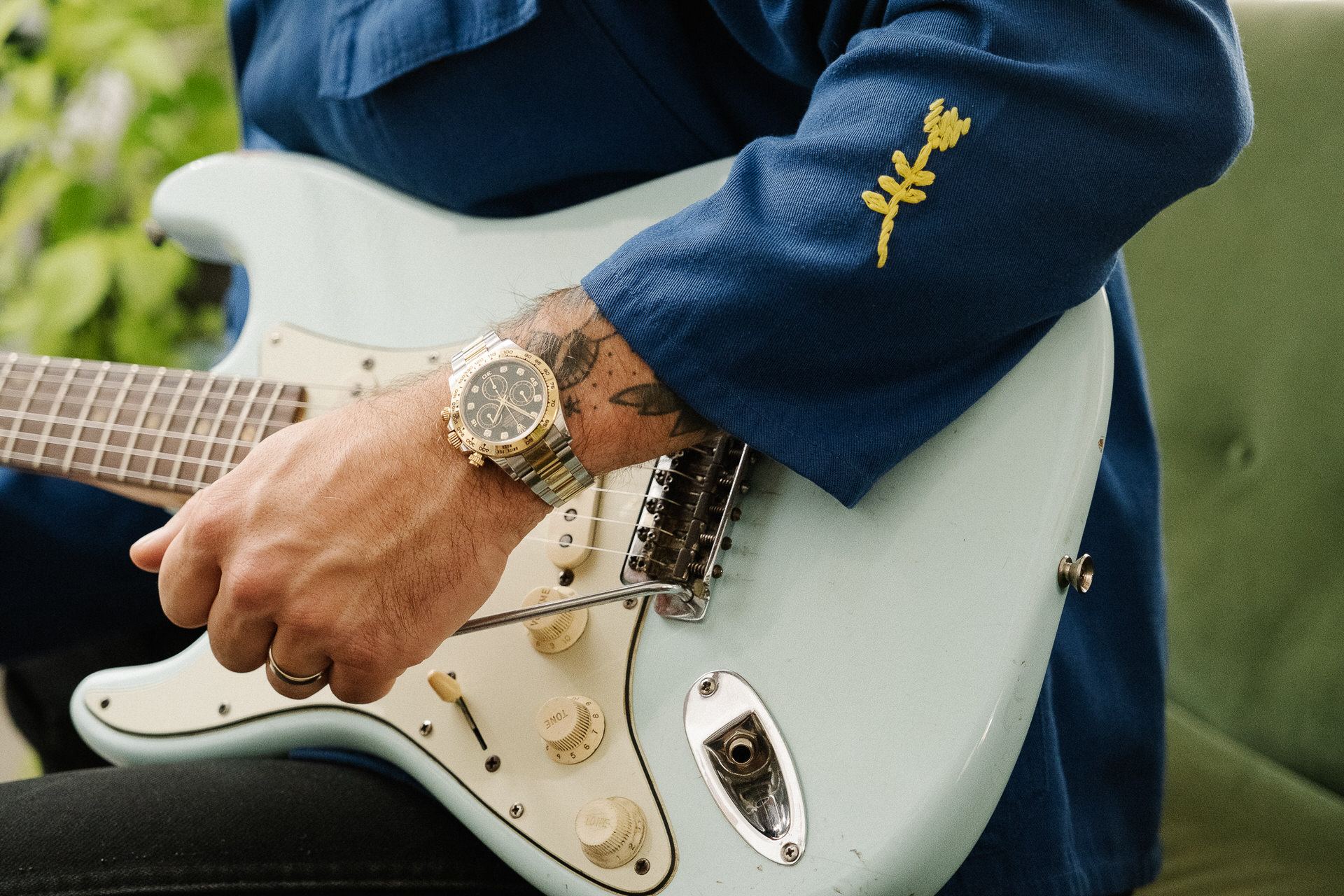
While Emerald City Guitars’ home base is their fantastically vibey Seattle shop, which is nestled on a side street off of historic Pioneer Square, C + T’s DTLA showroom has housed a small, but concentrated curation of vintage guitars and amps in a satellite location known as Emerald City Guitars South for the past year. While we love having both the instruments and ECG’s clients in our shop, the fact of the matter is Trevor Boone is cut from the same cloth as us and embodies the same ethos we do; it’s about passion first and the rest follows suit. And while a few of the guitars Trevor and his team have brought down to our shop have unexpectedly found a happy home with our CEO Cameron Barr, Trevor has inadvertently blossomed into a vintage watch collector through our relationship. But that’s the thing about enthusiasts – we just love to enable each other.
In the following interview, we go deep on Trevor’s history as one of the most trusted and passionate vintage guitar dealers on the planet, trace the parallels between our respective businesses, and get the story behind a pair of rare pre-CBS lefty Fender guitars that he says will be with him forever.
Emerald City Guitars is a family business you co-helm with your dad. Can you give us a little bit of background on how you entered the fold?
I was the kid that was in front of MTV watching the “Smells Like Teen Spirit” video when he was 3 years old. My whole life has revolved around hanging in the yard with a bunch of hippies playing guitar and surrounded by artsy types. My dad managed guitar shops in downtown Seattle and was a working musician that had previously been a touring musician and lived that whole life, so I was indoctrinated at an early age and I was always just wired like a collector. From Pokemon cards to Beanie Babies, to BB guns, to Hot Wheels – I always loved collecting and always cherished having the shrine of a collection in the room.
When I was in third grade, the first big trip I did was in a Jeep with a U-Haul trailer through Wyoming, Oregon, Montana, Washington, and I followed my dad around to every Salvation Army, yard sale, garage sale, thrift store, guitar store, and pawn shop we could find. While he was looking for guitars – which I picked up just through osmosis – I was digging around for the things I was interested in. Beanie Babies were huge and I remember I had the price guide and I was obsessed with where my investments were going with these little $5 purchases. I was also obsessed over BB guns at the time. So I’d be hunting for those things, but I essentially grew up digging through dust and always loved the treasure hunting experience. That trip was my first peek into the hunt. I was also really big on Craigslist at a weirdly young age and I remember having adults meet me at my parents’ house when I was like 13 and my mom would be like “Who the hell is here?!” and I’d be flipping a keyboard that I bought from somebody at high school or something. I was weirdly obsessed with flipping stuff at an early age, but I had a knack for it and really liked it. I was also a musician and a guitarist very early, so I worked at Guitar Center and I worked the weekends at our shop, and I was constantly surrounded by rock ‘n’ roll musicians and culture – which was a total blessing because that stuff shaped who I am.
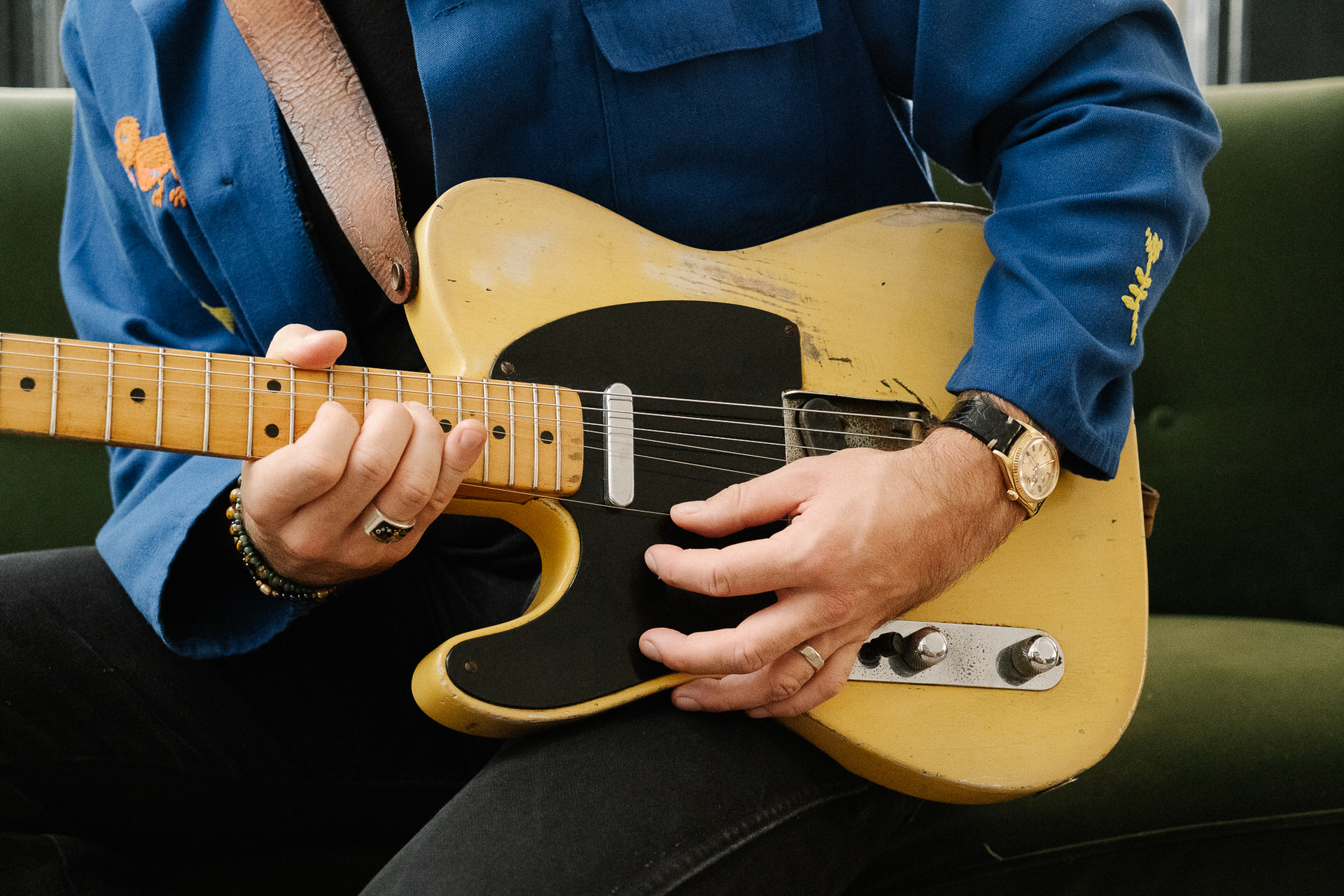
So you’ve basically had the collector’s gene since day one?
Since day one. If I was into something, I was obsessed with it. I had to know everything about it and I would just dive in head first. I’ve always been wired like that.
What is it for you that motivates that obsession?
For me, it’s when something takes you to another time or another place. Going through vintage guitar stores or thumbing through racks of clothing or looking at old cameras — it all takes me somewhere. That’s what led me really into chasing the stories behind the guitars and amps I find. These things are going to outlive us all and they have all lived lives before us, and there’s so much depth to that energy; it comes to you in a split second and feels like a lightning strike to me. I just love that feeling. I love the wonder, I love the unknown about it so much. And I’ll always be into building a shrine out of a collection; if you have the guitar, then you need the amp, the old strap, and it goes beyond that to the old signage and the old clothing. I like painting a whole picture with these finds.
I was really lucky to be in an environment with cool old stuff and I loved the people that it attracted. That influenced me and taught me what was cool; it wasn’t regular guys coming into Pioneer Square in the ‘90s looking for an old Valco amp or Supro guitar. We got all these old cowboys and artists and eclectic people. What I was interested in evolved from when I was younger, but I always knew what the cool stuff was and was ahead of the game because I was selling really heavy vintage guitars when I was 18. It put me at both an advantage and a disadvantage because it was really tough being younger and not yet fully speaking the language of the business, but I was just well-versed enough and picked up a lot from just being around the business. It finally clicked in my twenties and all-of-a-sudden I was selling half-million dollar guitars. For me, there’s nothing cooler than being the vessel those guitars flow through and facilitating that. I still love selling someone their kid’s first guitar; there’s nothing like the feeling when a dad and kid walk in for their first instrument and I have such a soft spot for that experience. Our shop caters to that customer, too, but for me, there’s nothing cooler than dealing with big guitars that have some archeology and research involved. The stories that come with finding and selling them are really important to me.
Bursts and Dumbles [the mythical handmade tube amps the reclusive late Alexander Dumble built] have a mystique that puts them in their own world. You can sell a vintage Strat and it’s a special guitar, but it’s still kind of a regular thing. Part of the mystique of a ‘59 Burst is it’s not a guitar you can just run a card and leave with it in a to-go bag. These guitars are hand-delivered — you’re flying it somewhere, and you become part of its story through that. There’s definitely a cool high that comes with adding to the legacy of those guitars. Sometimes we’re not even making a lot of money on a deal, but it’s like having an elephant in the zoo and it’s just worth us getting this guitar to have for a bit.
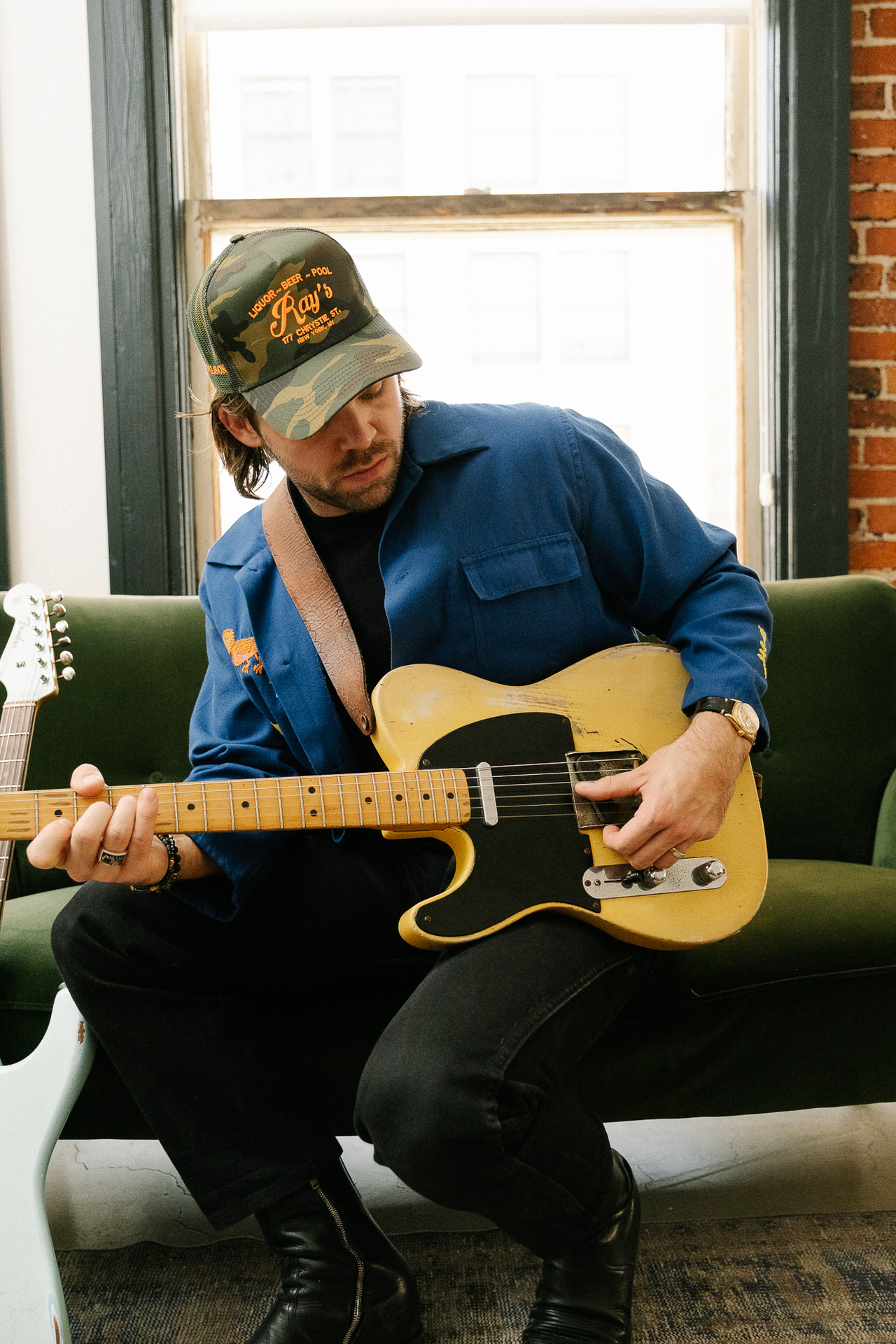
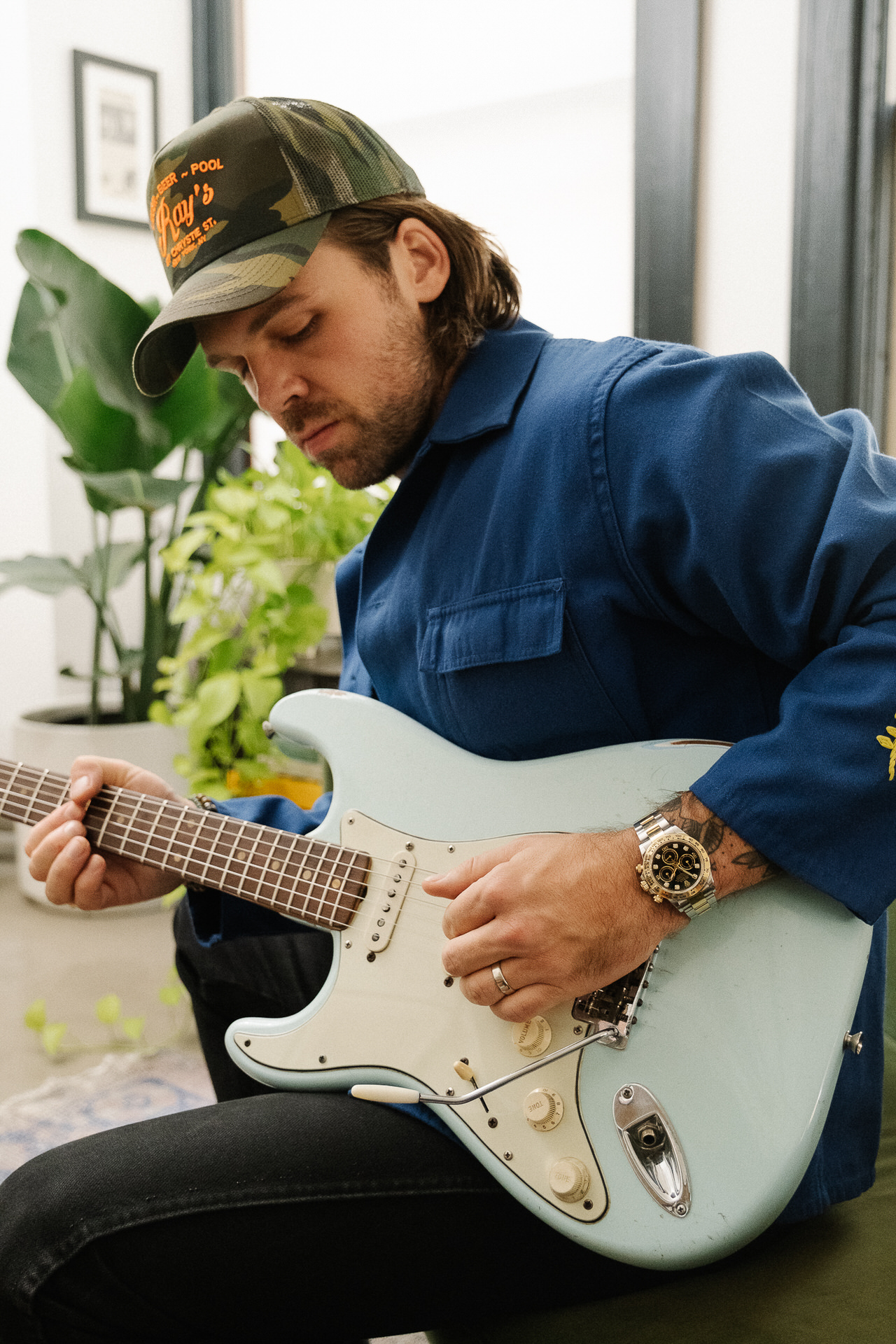
You guys do a really great job with the storytelling aspect and letting people see behind the curtain with your video series. What was the motivation for getting into that side of the business beyond just getting more eyeballs on ECG?
When I was a kid, the shop was basically one room, basically had no website, and was really primitive. I came on full-time at ECG when I was around 19 and that’s when the site GBase.com hit. I remember twisting my dad’s arm to sign up for it because it was $99 a year, but we could put stock online. GBase ended up being huge and I spearheaded us using it – I did all the photos, the listings, and I redid our website. I was running the floor and doing the web stuff and that took off. Eventually Reverb.com came along and we quickly saw the power of sites like that and social media. Content started playing a role and I was wondering ‘What else can we do?’ I’d been running around to the craziest places for this job since I was a kid, either with my dad or by myself, and there were so many times I wished I had a camera rolling. Just the fucking freaky places I was finding myself in, the people I was dealing with, so many of the experiences this business gave me were truly wild. So about 5 years ago, I hired my buddy Ken Lapworth, who is a fantastic videographer, and we decided to start really telling stories, starting with things like a pick-of-the-day guitar.
That daily video platform was really fun and proved the concept; people were into the storytelling side and when Covid hit, we didn’t know what the hell was going to happen. I don’t think anybody dealing with tangible assets and retail really knew what was going to happen. So we pivoted really quickly to make the shop appointment-only and it freed me up to consider taking the storytelling on the road. We already traveled so much to source guitars, why not take Ken with us to tell the whole story. That first video was really well-received and we were just like ‘Let’s do this all the time, if anything, just for ourselves!’ because we found ourselves yacking about our stories from the road all the time either way. We found that people really want to feel like they’re part of the treasure hunting that I’ve loved so much since I was a kid. People really respond to the search-and-rescue aspect of this business and finding rare pieces. You can only put so much in writing and a couple of pictures, but hearing someone’s voice and seeing their eyes light up when they’re talking about a guitar or amp or watch they love has this contagious excitement to it that I love. It adds to the thrill and also shows what it takes to actually unearth some of this stuff, but we also have to be sensitive in dealing with families and estates, and we understand that these things are often family heirlooms and that adds a lot of weight to the job. Even with everything we’re showing, we’re always trying to figure out how to show more of the process while being respectful. You get absorbed into their experience and it’s not disingenuous. I’ve found they just want somebody that respects the instrument’s story and I’ve found being able to document it and have its history attached in video form – I think it’s so important and when you deal with guitars like this. They deserve to have their stories told this way.
A great example is we picked up this cool ‘52 Fender Tele in Texas that was the one-owner guitar that belonged to an old tent preacher. We got it from his son and that guitar could’ve just sold to anybody – it’s a super desirable guitar and uncirculated examples are really rare now – but we went out to get it, we filmed it and told the whole story, and that will live on with that guitar forever. Wherever it ends up next, that story can be traced now. The crazy thing is weird shit happens a lot when we do these hunts; with that tent preacher Tele, we flew down there and it ended up being his dad’s birthday that day, and weirdly cosmic things like that come together around these deals over-and-over. There’s a weird kind of voodoo deal that just happens out of this shop and I’m always kind of shaking my head about it. I can’t explain it, but I love it.
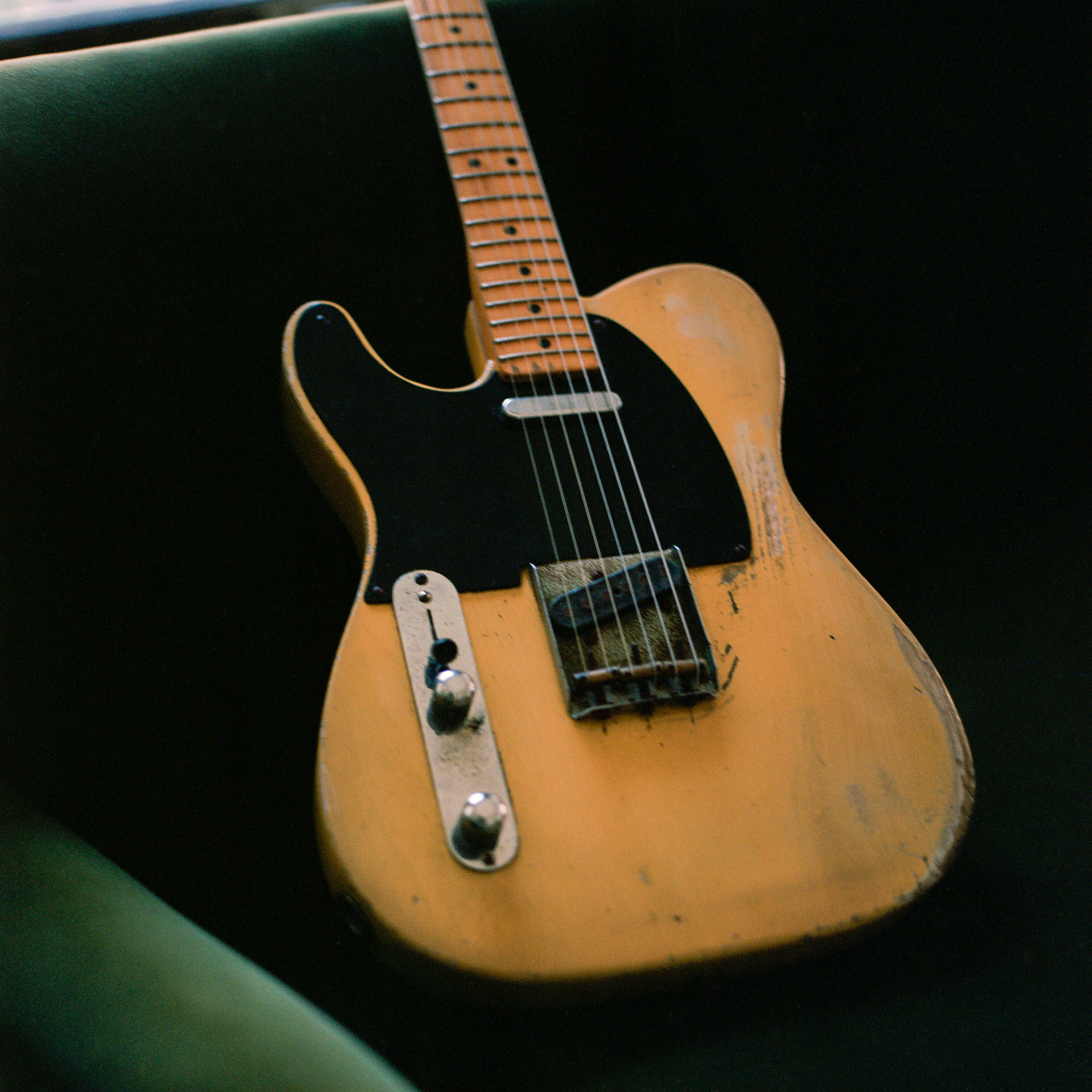
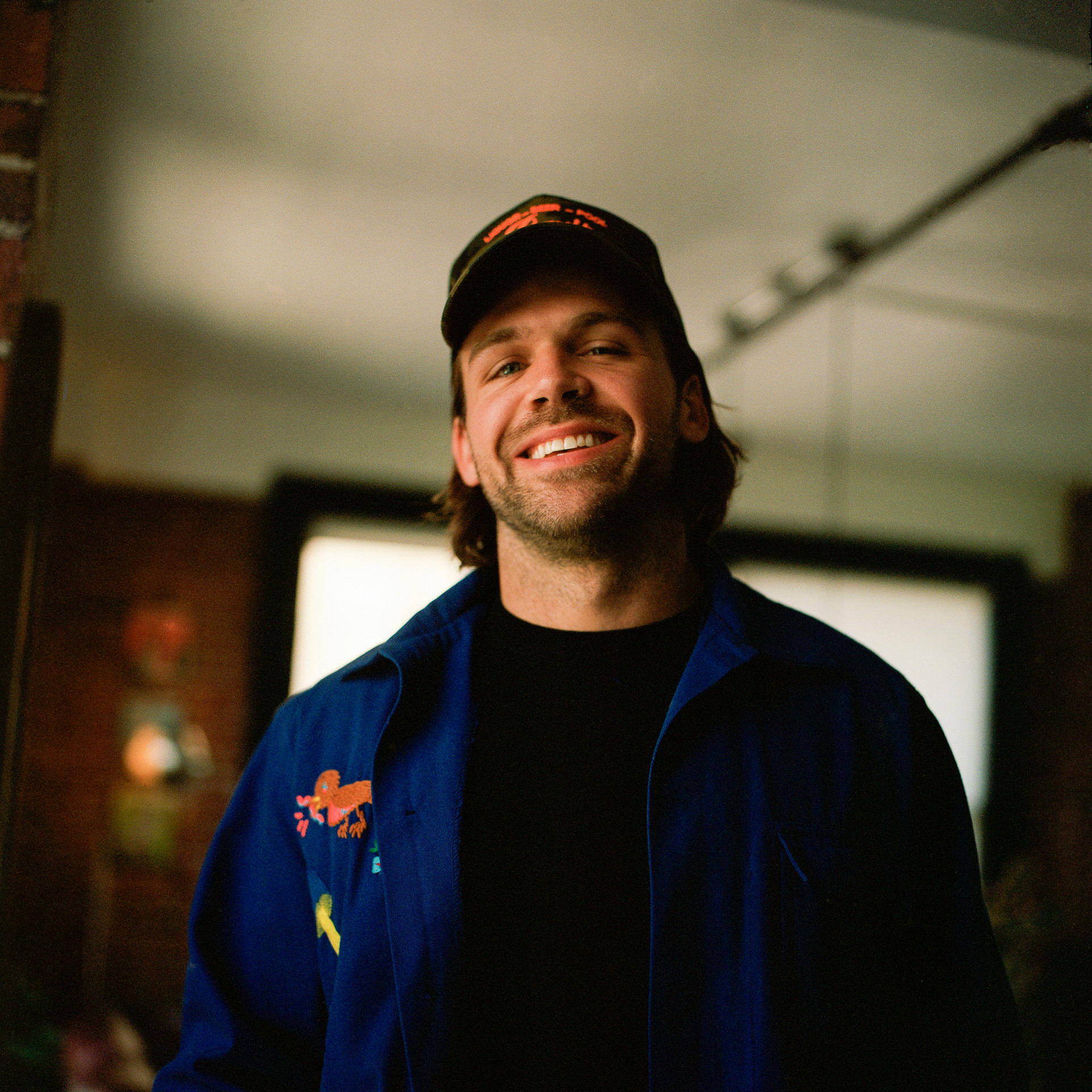
Do you have another example of something cosmic that lined up in a spooky way like that?
I have so many! One that ended up being a great video we did was we chased these custom color Fenders, a P-bass and a Strat, in Arizona. The gal selling them was named Christie and they were her husband Robert’s guitars. Robert had passed away, and it was time to let the guitars go. She talked to every big dealer, but after weeks of conversation, she says “Trevor, not only did you give me the best offer, but you were so kind and I could tell you’re so passionate about this. These guitars do mean a lot to me and I want them to go somewhere they’ll be used.” So we’re lining up a deal and I asked if she’d be comfortable doing a cool video honoring her late husband’s story, and she’s game. We ended up getting Robert’s old band that he had used these guitars in back together! Christie had never met these guys and the guys in the band hadn’t seen each other in 40 years. We interviewed everyone and found hundreds of photos of Robert playing the guitars. At the very end of the filming day, we’re doing an interview with Christie and she’s getting choked up and explains that they didn’t have much family and never had a proper memorial service for Robert, and that this really felt like closure.
Turns out the next day marked five years since he’d passed. It was just so heavy and it was beautiful that all of it came together. How and when it did. Everyone was laughing, listening to their old records, and you could hear Robert on the records and that there was Christie’s closure. There was this celebration of life and with these instruments being vessels for stories like that, and Christie’s story is what it’s all about for me. I can’t keep all these amazing guitars that I get to move, but I get to hold onto these memories and experiences, and document these people and the instruments as I go. I’ve just had the craziest time doing this my whole life. And I’ve still managed to play in bands that had some success and been able to tour and do music, and to be able to keep that a part of my lifestyle has been a dream.
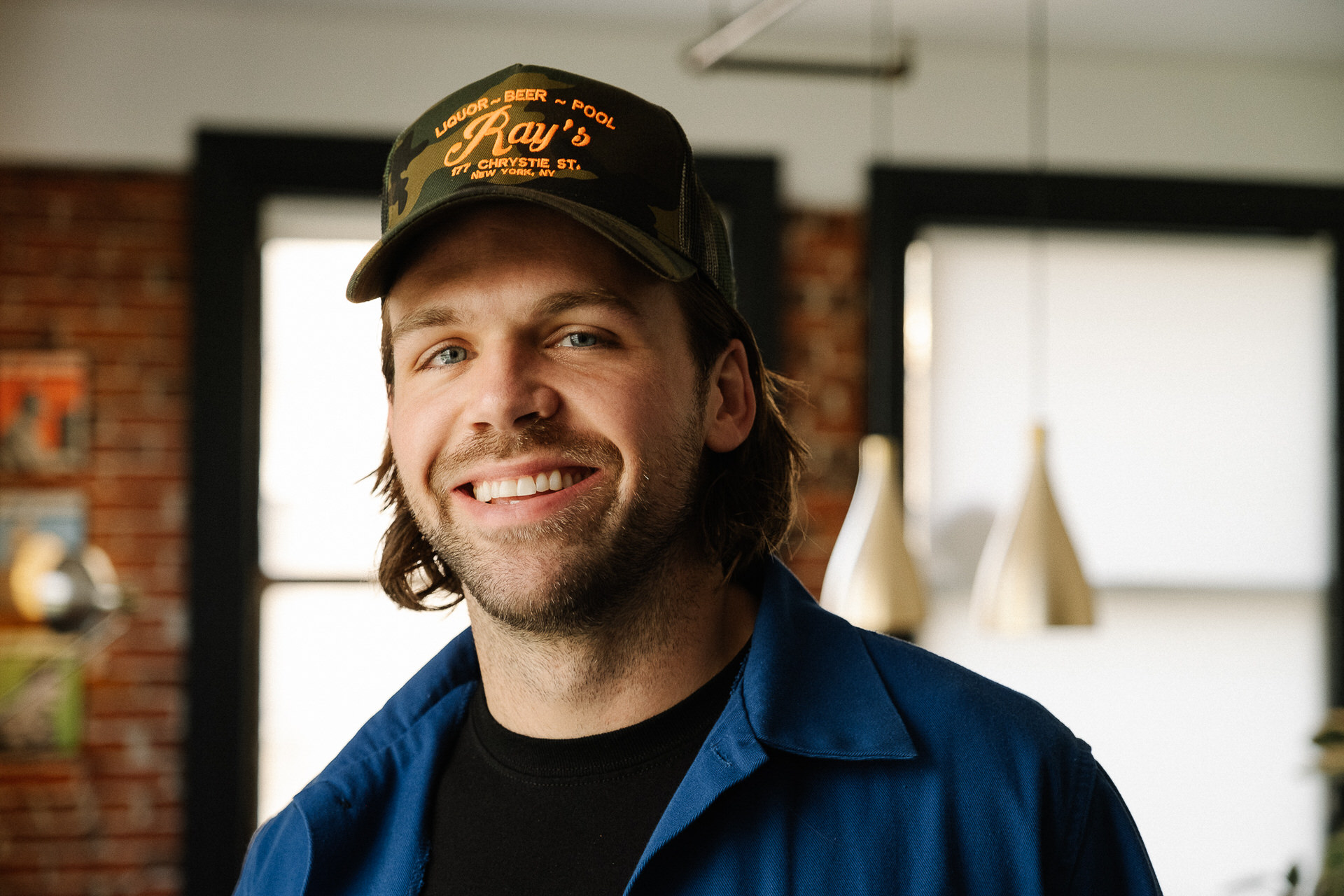

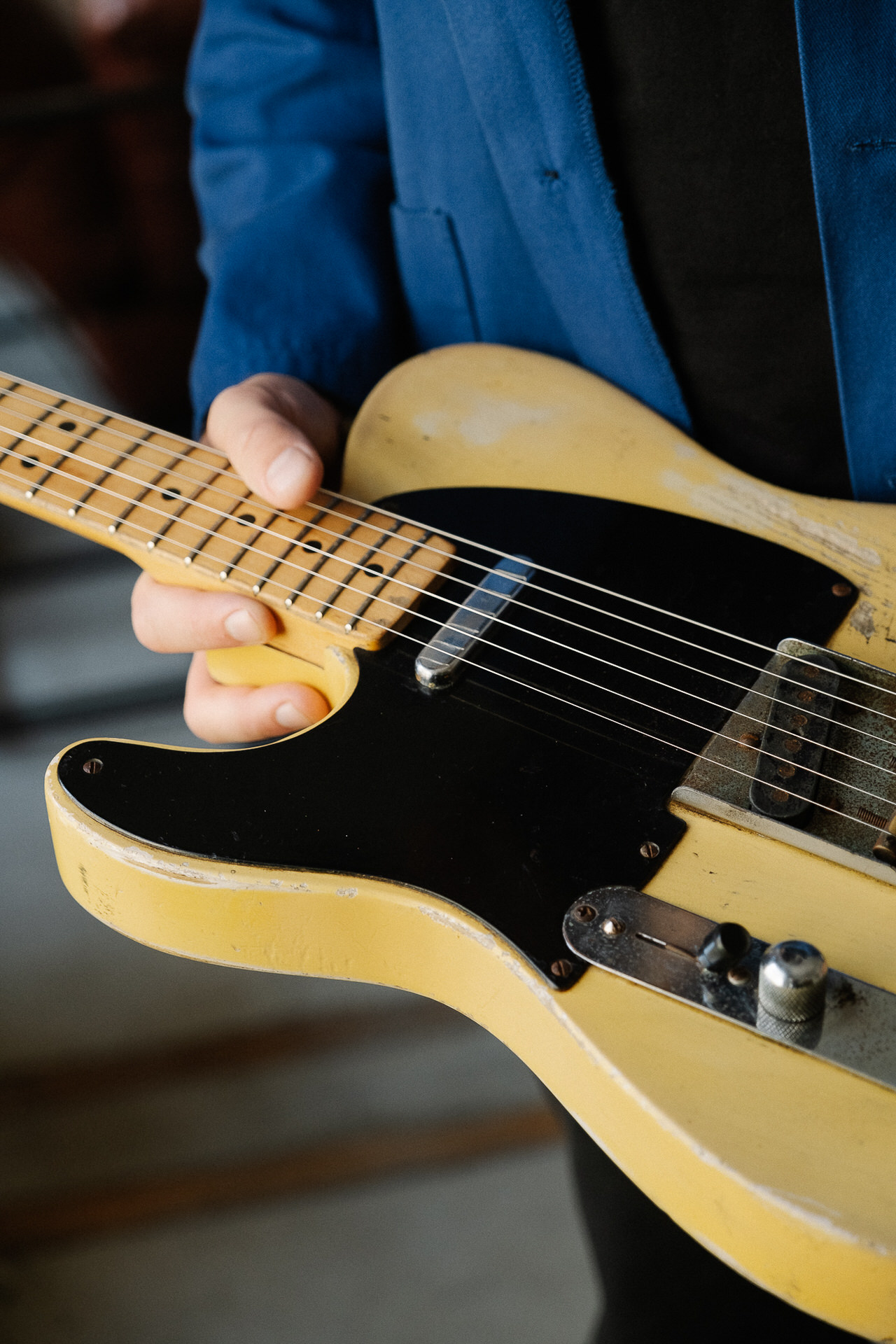
You guys are known within the industry for assembling major collections for big names. What’s the unseen challenge with building and tending to somebody’s guitar collection?
The hardest part is generally breaking bad news. A lot of people get really excited when they’re starting collections and they tend to make poor decisions in the beginning. I love building collections from the ground up because you don’t always just jump right into a Burst; I like being able to guide on that path. Oftentimes before I get to people, they’ve spent tons of money on guitars without any real direction or knowledge base. So when I get involved, my first steps are to go through their collection, appraise, identify, authenticate, and breaking the bad news in those situations can be tough – and there’s usually some bad news. Sometimes guys understand, sometimes they don’t really care, but there’s always surprises that come about and those conversations can be difficult.
I also like letting people explore their taste and make some mistakes along the way. I’ll always give my honest opinion and try to steer people right, but I think it’s character building to make a mistake or two in building a collection. My first priority is to get real about what they have, what’s going to appreciate, what’s probably going to plateau in the market, and asking questions to figure out what a client is really going to use, what they enjoy. I try to avoid selling guitars that are just going to be in the case collecting dust. The idea is to buy stuff that you’re going to use or that brings you joy regardless of its value, and hopefully it’s a solid investment. In my experience, vintage guitars are a great investment when collected properly and with some guidance. It’s a lot of fun to go from the beginning with someone, but it’s also a lot of fun to jump into a collection and problem-solve thirty years of strange collecting done at random.
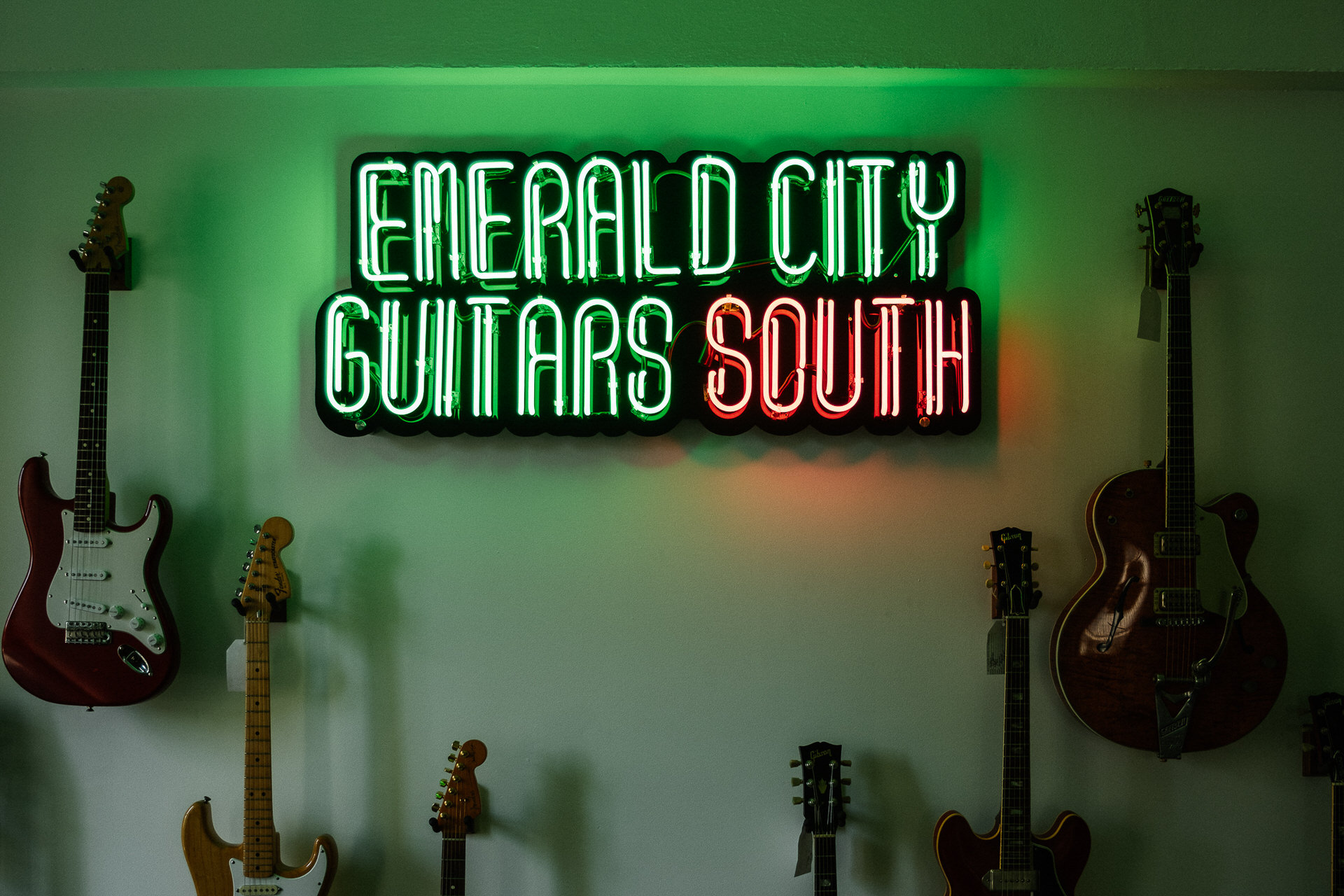
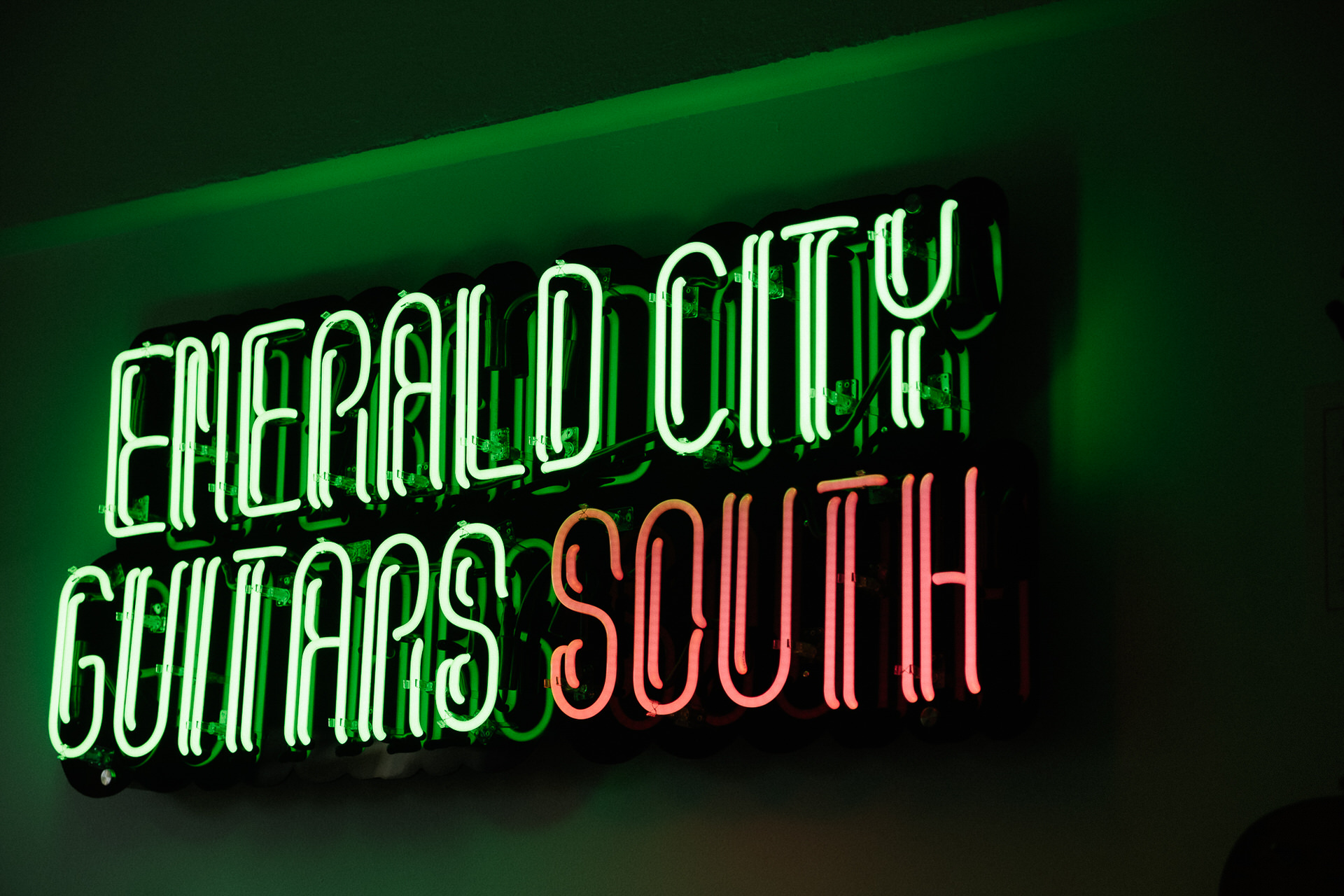
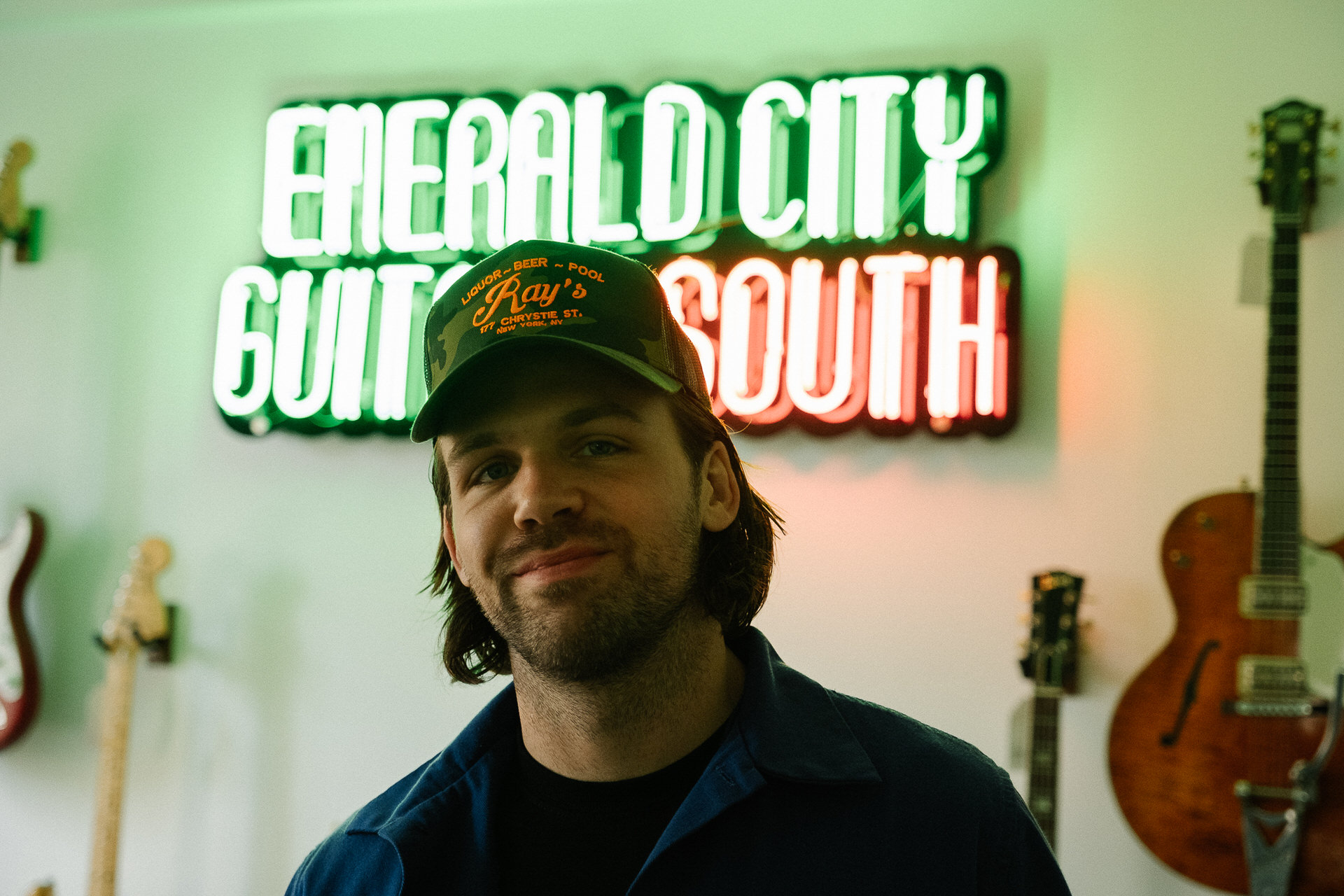
You have a lot of celebrity clients and major players in your rolodex. Which ones have been the most rewarding to work with?
I’ve got a really diverse roster that includes everyone from people that know one knows about with more money than God that just love guitars, to well-known businessmen that people wouldn’t expect to be into guitars, to well-known players that collect. Obviously Joe Bonamassa is a guy we’ve got a great relationship with. Though Joe’s everyone’s client in this world, he and I go way back and he grew up in a guitar shop very much like I did – so we’ve been friends for a long time and shared that experience and passion.
Somebody that I really love working with and still love working with is Jason Momoa. I sold him his first guitar. He showed up in a Shell Pink Cadillac that was beat-to-shit, and this was when he was still on Stargate Atlantis with dreadlocks. I remember he came to the shop and he looked otherworldly, and he bought an old, nasty 1930s resonator that was just cool as shit! It had so much vibe, it was perfect for him. That was his first guitar and he’s kept on playing and become a great client. Jason’s a guy that’s really fun because he’s very worldly and travels all over, and he’s a collector of everything. When I did an appraisal at his house, it was in some temple on this compound, and he had everything from knives and daggers and crystal balls to hundreds of instruments. All were incredible, but some of them were totally fucked up – but in a beautiful way. That made it a challenging appraisal, but something I love about Jason is he buys what makes him feel good and if it looks cool and feels cool, he’s into it. I love his take on collecting because he’s got some really choice pieces – some of those icon pieces that any collector would want – but he’s also got like these oddities that he simply enjoys – like Gibson L-00s that were burnt in a house fire and basses that look like they were dug out of a swamp. That’s not the stuff you see very much in my world, and it’s tricky because it’s also not the stuff that you can easily express the value of to a guy who’s just looking at specs and photos on Reverb. It’s really hard to explain that the pickup doesn’t read, but it still sounds good and makes noise. For Jason, cool is cool.
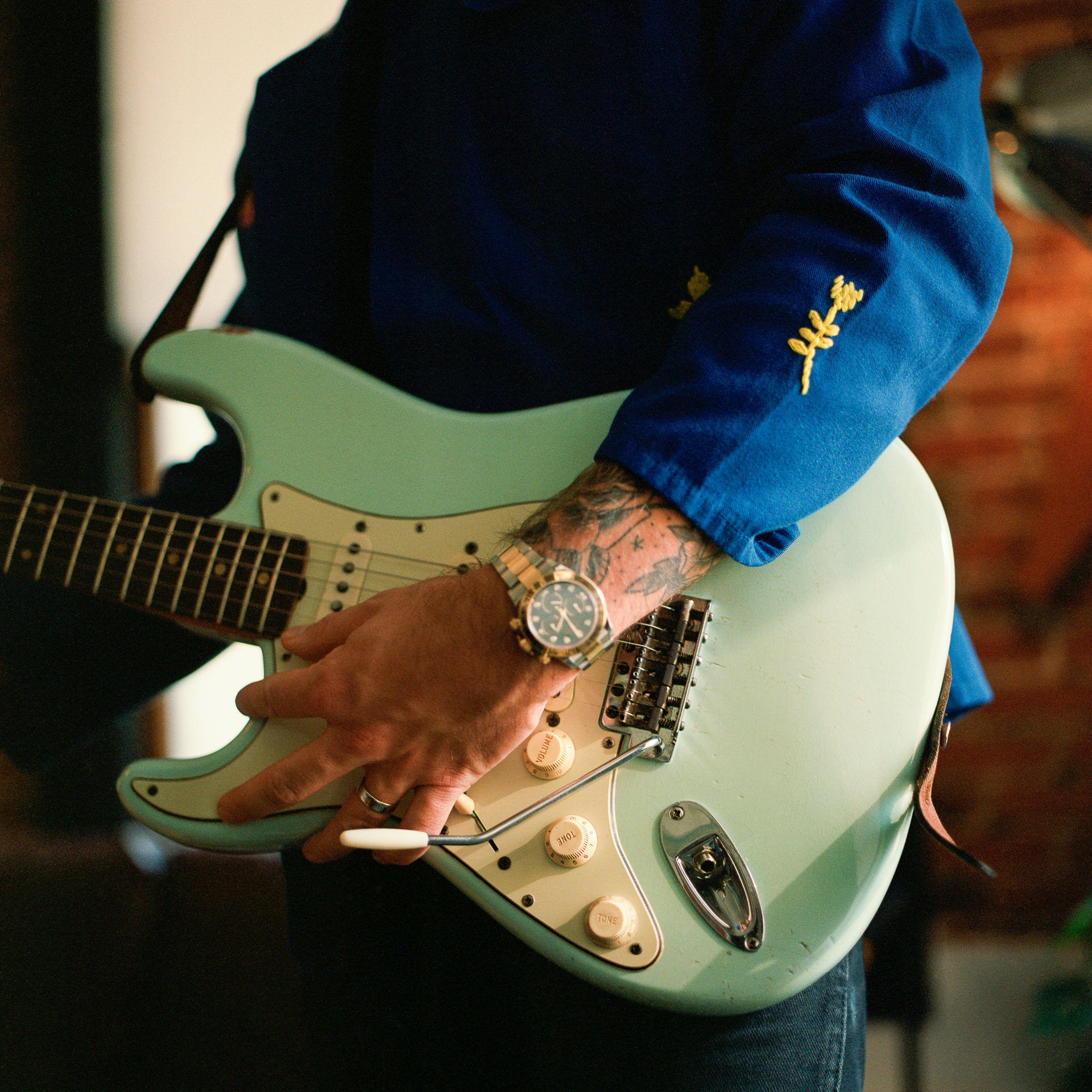

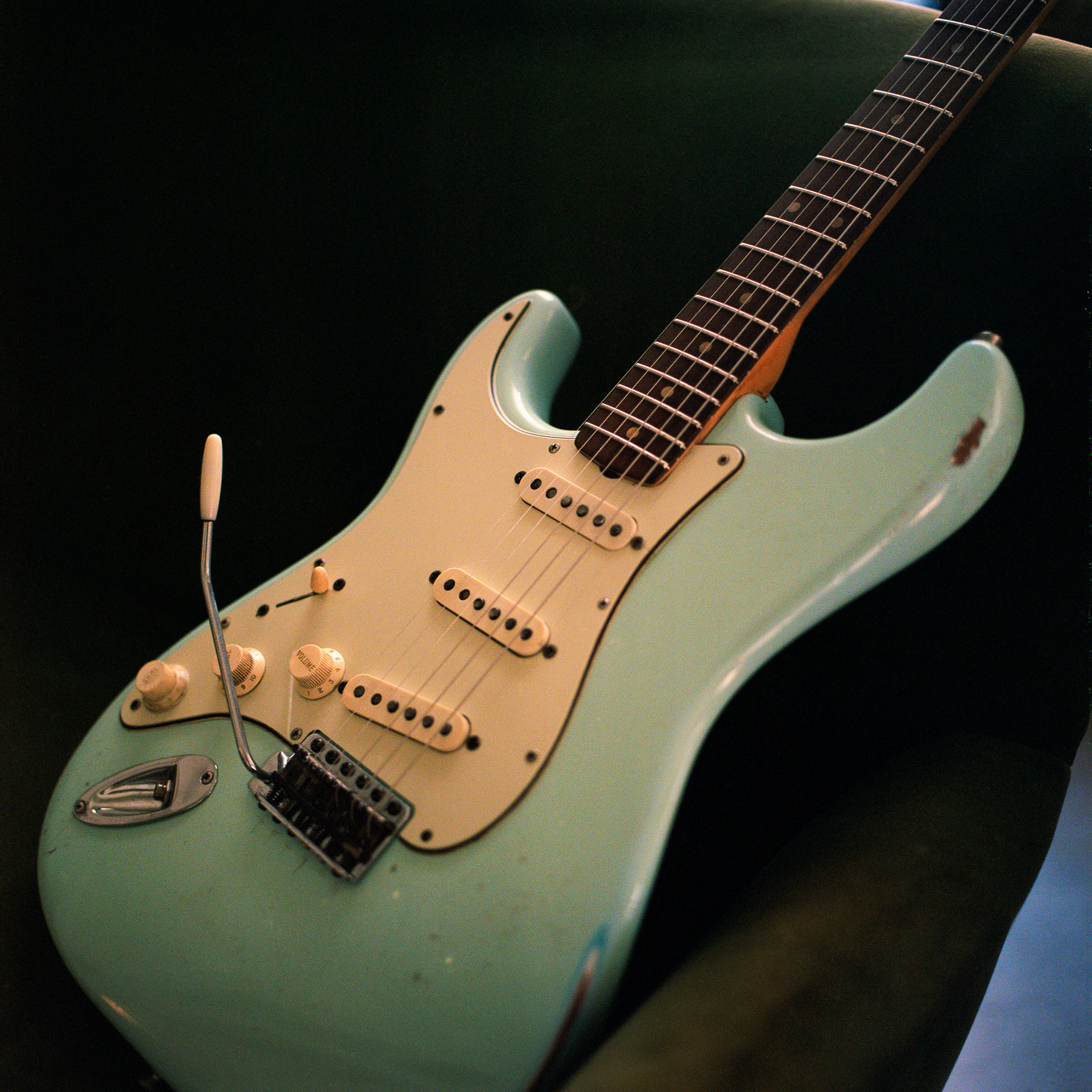
You’ve also sourced a lot of guitars and amps that have gone on to become famous instruments in the hands of famous players. What’s an instrument that you’ve put in the hands of a player that they’ve bonded with that you take a little bit of pride in seeing on stage?
I sold Mike McCready from Pearl Jam his Burst with the spot on it. That was really fun and I’ve seen him play that every show since we sold it to him. When we sold it to him, I brought the guitar to the Pearl Jam warehouse to do a shootout with his other Burst, and I thought this one with the spot was better. So he bought it and he plays it all the time now. I love the guitar because it’s got a little spot the size of a quarter on the top where maybe there was a sticker on it in a window back-in-the-day, so it’s so easy to identify when he plays it and I love that.
I’ve sold John Mayer a lot of his Dumbles and I see those on stage with him all the time. He also bought one of my favorite Fiesta Red Fender Stratocasters and I’ve seen him play that numerous times. Joe Bonamassa has a ‘55 hardtail Strat that he’s said on-record is his best guitar and I sold him that one. Another example of a guitar that was beat-to-shit, feather light, and I remember calling him and saying ‘I have the best Stratocaster ever made’ and he goes “Oh boy, okay.” I’m like ‘No, no – it really is!’ Joe passed on it for a couple weeks and I go ‘Joe, this is genuinely the best Strat I’ve ever played.’ At the time, he probably had 200 Strats. So I was playing a show and I was about to jump on stage, and he finally called me back while I was backstage and says “Okay, how about $17 grand?” We had sold him a few guitars that year and had kept landing deals at $17 grand, so it had become this funny common number for us, but it made sense for the guitar, so he got it, refretted, and now it’s his favorite Strat. He tours with it and plays it at every show and he sounds so good on it, and I love that I get to go and I see him live and see this great, amazing guitar in the hands of a prolific and gifted player that can get the most out of it.
Another great one is Keith Urban bought the first Dumble ever made – literally serial number 001 – and he’s toured with that amp. It was awesome to see that on stage. Luckily I’ve sold a lot of really good guitars that I hand-pick for artists, and usually they end up on-stage with these guys. That’s always my goal when they’re going to guys like that; I hope it doesn’t land in the closet.
You have the blessing and curse of being a person that plays guitar left-handed, which limits the vintage guitars available to you drastically. However, you’ve found some incredibly cool pieces for your own collection.
So I’m right-handed and do everything right-handed except guitar. Playing left-handed guitars has released me from the cross-to-bear as a collector. I’d be a fiend and I’d be switching and trading constantly. Instead, I get to find these guitars and give them to somebody who’s going to really play them!
That said, I’ve found some incredible left-handed guitars. My two main ones are ‘62 Strat and a ‘52 Tele – which was one of the first left-handed guitars ever made by Fender as specifically a full lefty Tele. There’s a couple out there with some mixed-in right-handed parts, but mine is a full lefty Tele that was made in February ‘52. That guitar is my baby and I play it all the time. I drag it around a gig bag and have put many, many miles on it.
I got the Strat this year and I’ve had a bunch of vintage Strats, but never a pre-CBS one like this. I finally crossed that off the list and while I’ve obviously played a million slab board vintage Strats, finding a great lefty that has a refinished body was huge for me because I can hurt it a little bit and really use it and not worry about it. These guitars feel like they were made for me in ‘62 and ‘52. They’re really superior and the ‘52 Tele is my pride and joy; it’s like an old truck – no filler, no bullshit. Real ‘50s craftsmanship, to the point that it’s almost like Americana folk art in a sense. The simplicity of it is just a reminder to me constantly about where to start when looking for a guitar. It’s a guitar that takes me somewhere every time I play it. Those two Fenders will live with me forever.
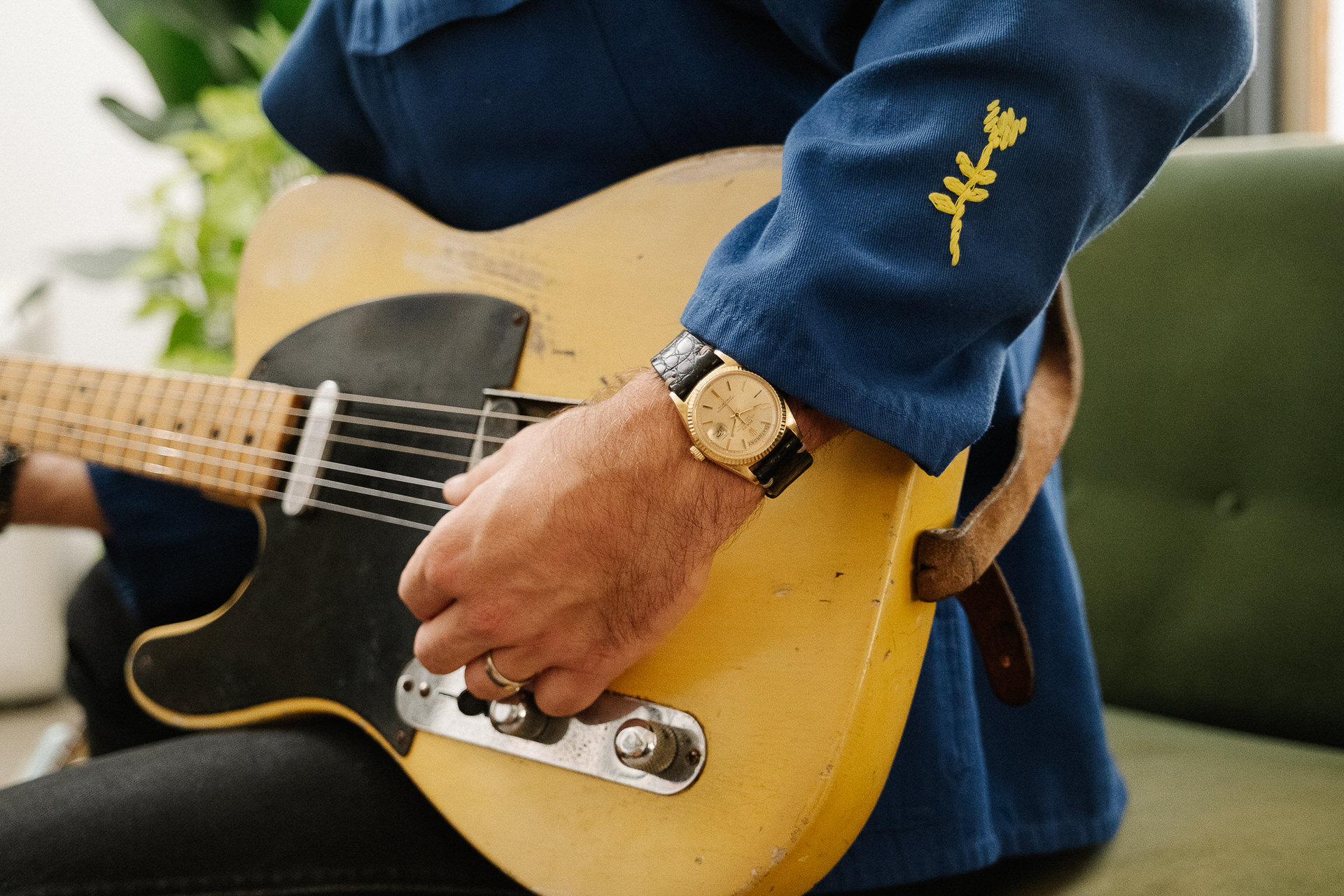
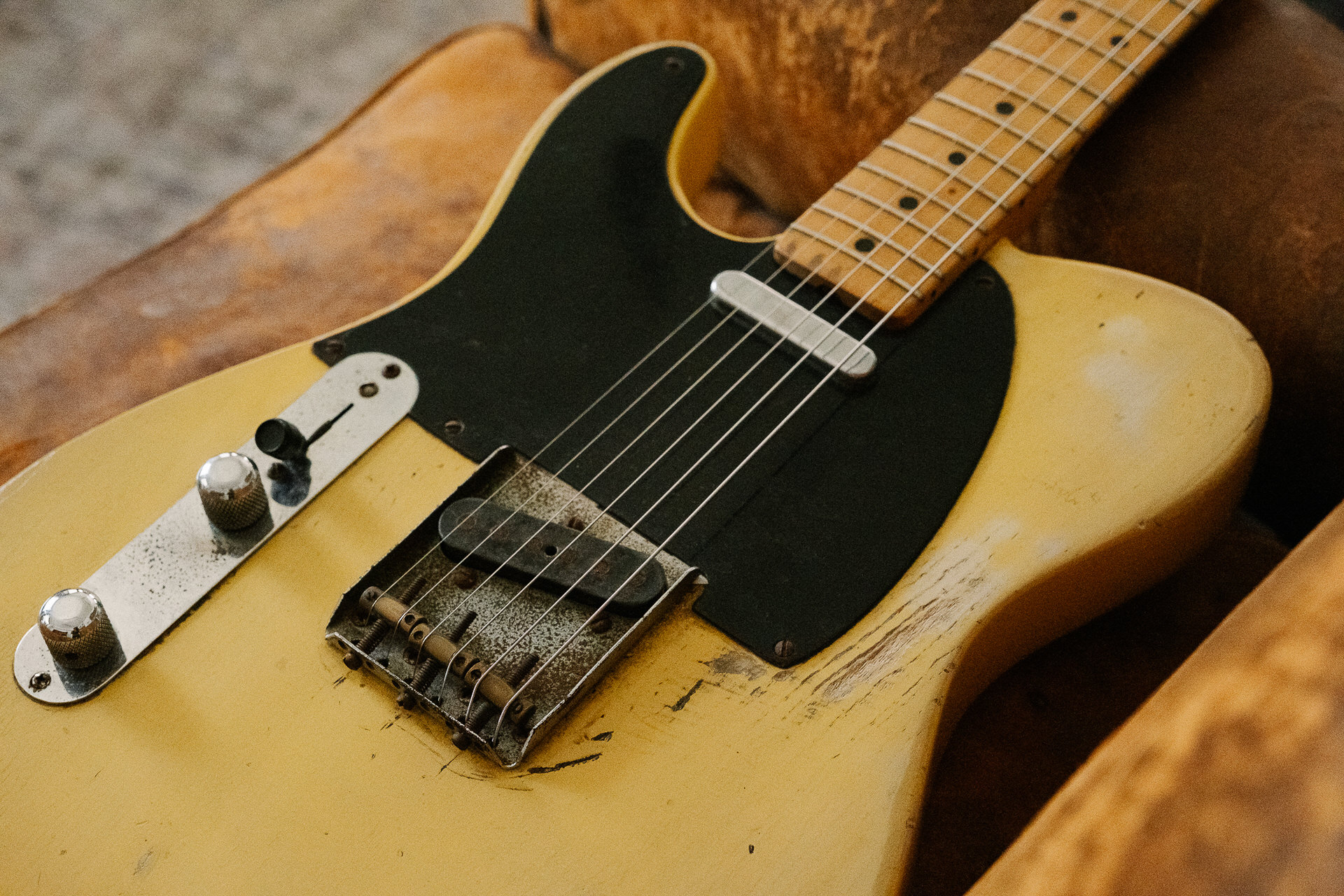
We’ve done you the disservice of facilitating your interest in vintage watches. Let’s talk a little bit about where you got started with watches and where your collecting has taken you.
I always had a watch. When I was a kid I had the Ironman watch and then I wanted the Nike watch and eventually I got a Fossil watch when those were really popular. I’d always thought Rolexes were going to be something that would happen so much later in life, but you sell twenty five Bursts and you start getting into Rolex territory. I finally had the dough to get a good watch and the first one I got came when I walked into Ben Bridge here in Seattle, just like a punk kid with some money in my boot, some money on a Visa, whatever I had. I put my pennies together and bought a two-tone Daytona. I went to check out Submariners, but this was a big deal for me at the time and all my money was going towards this, so the Sub felt too plain and I wanted something flashy. The Daytona I got had diamond markers because I wanted to bling out a little bit at the time. I wanted to make sure I could feel every penny I spent on it because it was such a big deal for me at the time. The first Daytona broke within six hours and I went back to the shop just tripping because I basically signed my life away. The guy at the shop emailed Rolex and said “This kid’s a good advocate and a good guy and he came in with all his money in different forms and his watch broke immediately.” They overnighted a new one from Geneva because there wasn’t another Daytona with those specs in the country.
After you started with Craft + Tailored and introduced me to the team there, it was so cool because it gave me a sense of the other side of the counter. It wasn’t long before I started getting deeper into it and wondering what watch was next. It’s rare to meet somebody that you immediately trust, that will take the time to deal with you and especially a beginner that’s going to drown you with a million questions. It was so easy with you guys and it was no time before I bought two watches from you guys while I was in New York delivering a Burst. I grabbed a vintage Day-Date and a Datejust from you then and when I got home, I’d ran out of wrists, so I bought my wife one a cool ‘60s Datejust with a silver dial. Then I saw her wearing it a lot and had to buy one for myself. It was getting sick for a bit there. When I sell a Burst, it’s a half-million dollar guitar now – so I’ll treat myself when it happens or I’ll pour it into another investment. It’s so fun because there’s an education that comes with it and I will always come from a background of tangible assets, and I love knowing what they’re worth, but having something in your hand that you can actually wear or play and enjoy and it’s okay. You’re not just looking at dollars in the bank going up and down. Coming from that world made it really easy for me to transition into watches and I love investing in that type of stuff.
I remember talking to you and Cam and asking ‘What else? Where do I go now?’ and you said something like “get your icon pieces and build a foundation,” which I really love. Next would be a Sub for me, but it’s been really cool and I wear a different watch every day and for different occasions now.
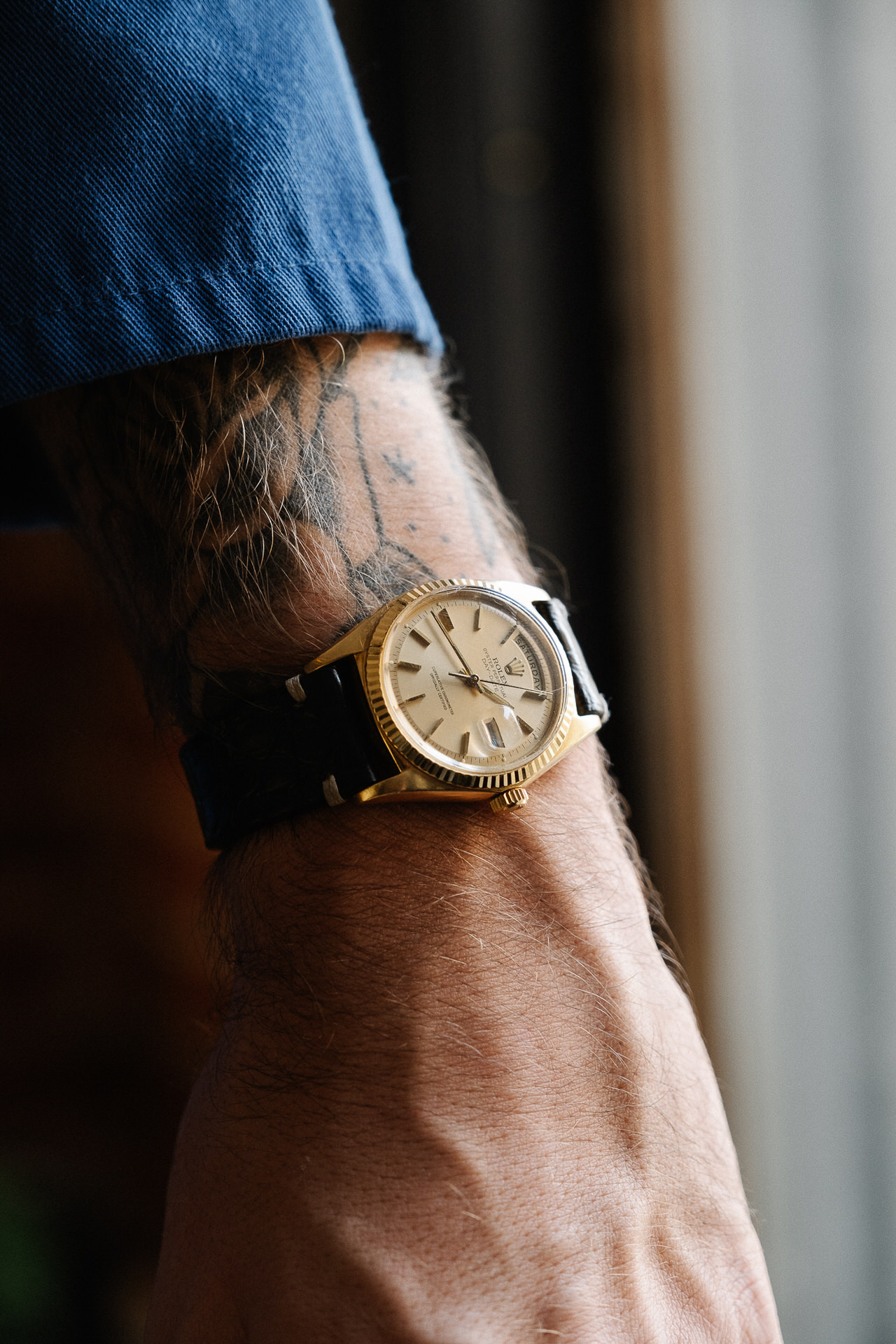
I love the yellow gold President that you wear on a strap, and I think that watch is perfect for taking something very upscale, but working it into a casual look.
I love it! Something that was really cool to discover after owning the Daytona and experiencing the newer gold Rolex uses is I’m hard on my things and the Daytona looks worn, but in a very different way. The old gold on that President is just so rich and beautiful. It’s one of my favorites. Lately I’ve been back to my two-tone Datejust, which is a ‘90s example. When I first got it, I felt like a ‘90s real estate agent that just sold his first house or something, but God, it works with everything and it’s got a little bit of a country vibe to it, too. When I’m playing a show or wearing something western, it’s the watch I wear because it just hangs really cool and looks right in that context because it’s so timeless. Sometimes it’s purely how it makes you feel and there’s a whole subliminal depth to that world. There’s a thing that goes on when you put a watch on and you look at it that changes how you carry yourself. It’s so fun.
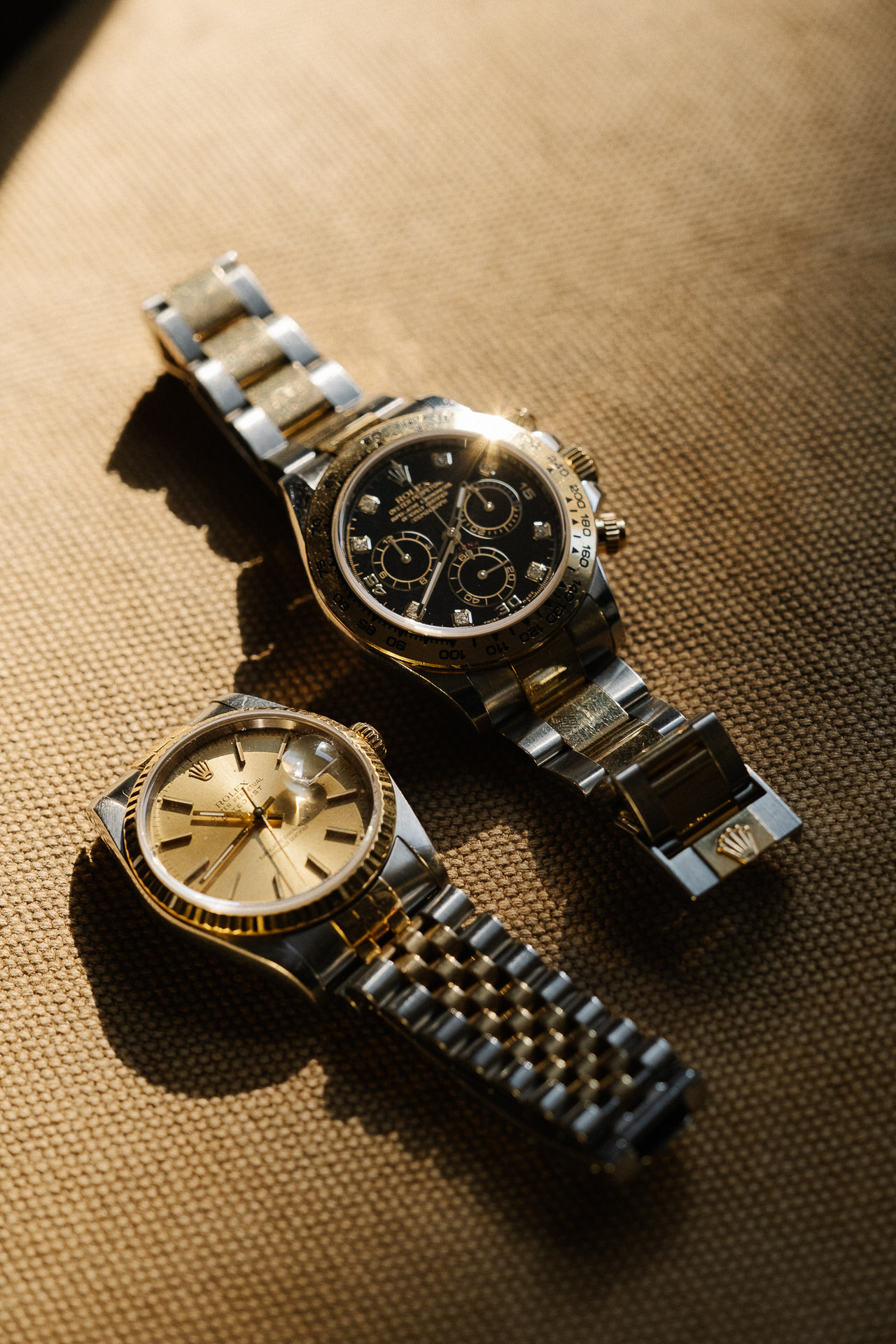
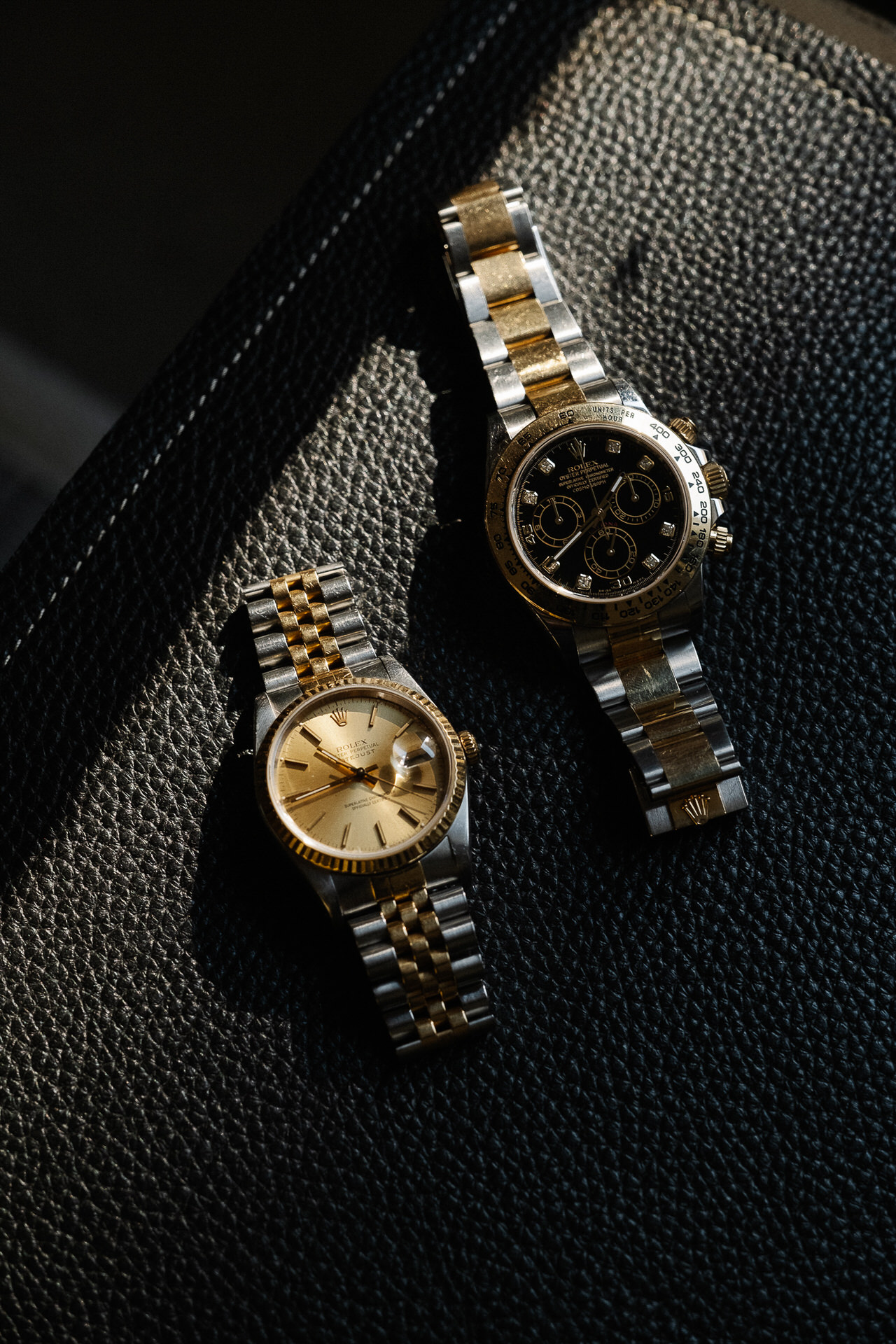
I think watches share something with vintage guitars in that you really have to wear one or play one to truly get what each example brings to the table. Pictures will never full do either of these things justice.
Oh god, yeah! And with the vintage watches, my Day-Date and one of my Datejusts were made in the ‘60s and just like with old guitars, I’ll catch myself wondering ‘Where was this? Who bought this new? What state was it in?’ There’s a living story in them that’s continuing in my care and you can’t help but be curious. And talking about parallels between the watch world and the guitar world, there are so many things that line up within that amazing golden era of design and production. They all intertwine in different ways and it’s just so fun to kind of connect those dots. These things are hopefully going to outlive all of us, so we are just custodian caretakers for a little bit. At the end of the day, it’s just fun as hell to add to their stories.
Photos by Rio Asch Phoenix

Check out 'Reference Tracks' our Spotify playlist. We’ll take you through what’s been spinning on the black circle at the C + T offices.

Never miss a watch. Get push notifications for new items and content as well as exclusive access to app only product launches.
Sign up for our newsletter to receive updates and exclusive offers